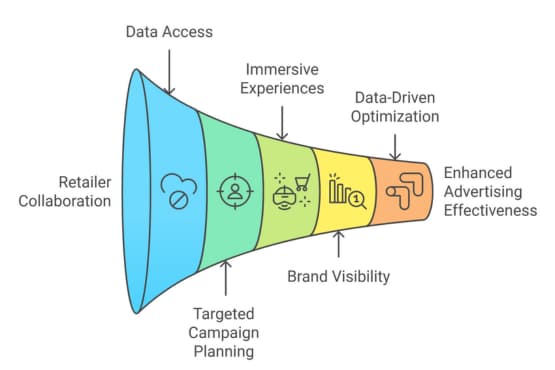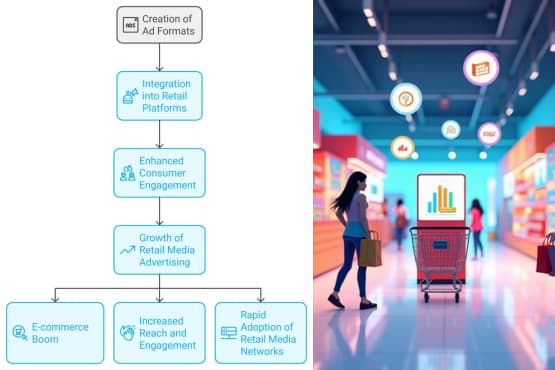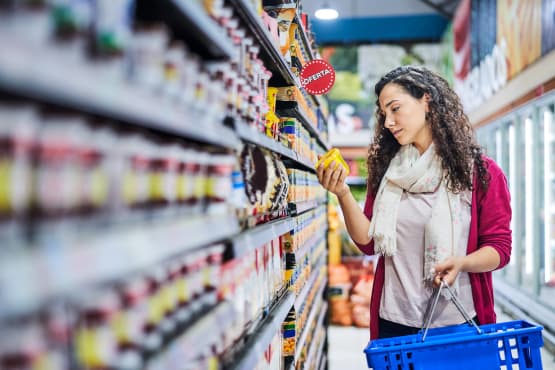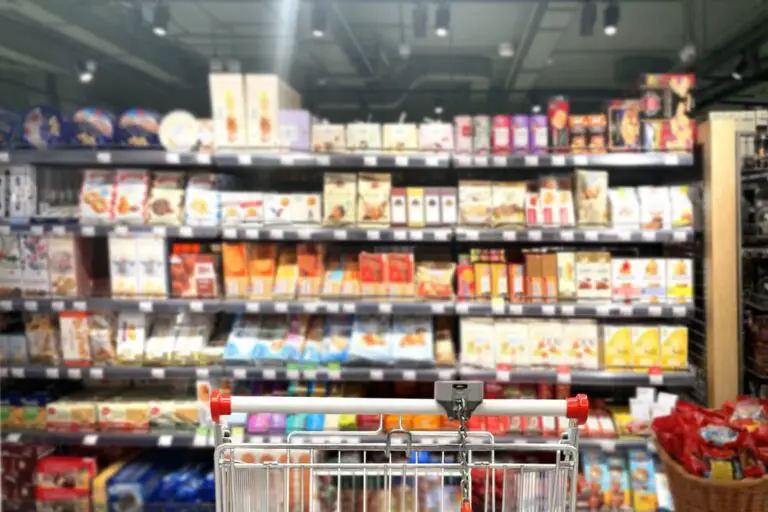Trade marketing has emerged as a powerful catalyst for amplifying the impact of retail media advertising. As consumer behaviour continues to evolve and brands seek innovative ways to engage their target audience, the synergy between trade marketing and retail media has become a game-changer.
This article delves into how trade marketing strategies can supercharge retail media advertising efforts, unlocking new opportunities for brands to connect with shoppers and drive measurable results.
Introduction to Trade Marketing
Trade marketing, a strategic blend of marketing and sales initiatives, has long been a cornerstone of successful brand-retailer relationships.
In the digital age, trade marketing has evolved to encompass a wide range of tactics designed to influence consumer behaviour at the point of purchase.
By leveraging data-driven insights, personalized promotions, and targeted messaging, trade marketing empowers brands to stand out in an increasingly competitive retail landscape.
How Trade Marketing Enhances Digital Retail Media
As retail media networks gain prominence, trade marketing plays a pivotal role in optimizing the effectiveness of advertising campaigns.
Through close collaboration with retailers, brands can tap into valuable first-party data, gaining deep insights into consumer preferences and shopping behaviour.

This knowledge enables precise targeting, ensuring that the right message reaches the right audience at the right time.
Trade marketing brings several key value propositions to the digital marketplace:
- Immersive shopper experiences: Create personalized, engaging experiences that capture attention and encourage brand interaction.
- Boosted brand visibility: Leverage strategic product placement, eye-catching displays, and targeted promotions to drive consideration and sales.
- Data-driven optimization: Use data analytics to fine-tune campaign performance, allocate resources effectively, and measure ROI.
Tip: Focus on creating immersive, data-driven experiences that seamlessly blend trade marketing and retail media.
Understanding Retail Media Advertising
Retail media ads let brands reach consumers right at the purchase point. By leveraging the vast reach and first-party data of retail platforms, brands can deliver highly targeted and relevant ads to shoppers actively engaged in the buying process.

Definition, Key Components, and Examples
Retail media advertising encompasses a range of formats, including sponsored product listings, display ads, video ads, and custom content integrations.
These ads are seamlessly integrated into the retailer’s website, mobile app, or in-store digital screens, providing a non-intrusive and contextually relevant advertising experience.
Examples:
- Amazon’s Sponsored Products and Sponsored Brands ads
- Walmart Connect’s display ads and sponsored search results
- Target’s Roundel media network offerings
Trends Driving Growth and Adoption
The rapid growth and adoption of retail media advertising can be attributed to several key trends:
- E-commerce boom: The accelerated growth of online shopping has made retail media an essential component of modern marketing strategies. In fact, US retail media spending is projected to grow by an impressive 30% in 2024, reaching 20% of total US ad spend.
- Impressive reach and engagement: Retail media impressions from top US retailers reached a staggering 21.6 billion in July 2024, marking a 27% year-over-year increase. This surge underscores the growing importance of retail media in capturing consumer attention, especially during peak shopping seasons.
- Rapid adoption of retail media networks: The UK retail media market achieved an impressive £3 billion in revenue in just seven years, showcasing the rapid adoption of this advertising format compared to social and search advertising.
Integrating Trade Marketing with Retail Media
To maximize the impact of retail media advertising, seamless integration with trade marketing strategies is crucial. This holistic approach ensures a cohesive brand experience, amplifying the effectiveness of both traditional and digital marketing efforts.

Real-Time Engagement and Conversion Opportunities
Trade marketing initiatives, such as targeted promotions, limited-time offers, and product bundles, can be seamlessly integrated into retail media campaigns.
By leveraging real-time data and dynamic ad creative, brands can deliver personalized and timely messages that drive engagement and conversions.
Case Study: Target Target reported that 75% of shoppers use the app or website while shopping in-store, with this figure rising to over 90% among Gen Z shoppers.
This demonstrates how effectively retail media can bridge online and offline shopping experiences, driving engagement and sales through integrated marketing efforts.
Cross-Team Collaboration Best Practices
Effective integration of trade marketing and retail media requires close collaboration between marketing, sales, and e-commerce teams.
Regular cross-functional meetings, shared goals, and transparent communication ensure a unified approach.
By breaking down silos and fostering a culture of collaboration, brands can deliver a seamless and impactful shopper experience across all touchpoints.
Case Studies: Diverse Industry Examples
Successful integration of trade marketing and retail media can be seen across various industries:
- Walmart’s Strategic Partnerships: Walmart has been actively acquiring technology platforms to enhance its retail media capabilities. For instance, its recent purchase of Vizio for video ad technology integration exemplifies how large retailers are leveraging partnerships to expand their advertising reach and effectiveness through data-driven strategies.
- Amazon’s Dominance in Retail Media: Amazon’s retail media platform is leading the charge by providing brands with precise targeting capabilities based on extensive shopper data. Brands using Amazon Ads have seen substantial returns on investment due to the platform’s ability to reach consumers at critical points in their purchasing journey.
- Criteo’s Commerce Media Ecosystem: Criteo has reported significant success in integrating various retail data sources into its advertising solutions, allowing advertisers to craft more targeted campaigns that resonate with specific consumer segments across multiple channels.
- KFC’s Virtual Shopping Experience: In China, KFC created a virtual store within a gaming platform, allowing customers to order real food while engaging in a virtual environment. This innovative approach highlights how brands can leverage immersive experiences within retail media strategies to enhance customer engagement and drive sales.
Implementation Framework
To effectively implement an integrated trade marketing and retail media strategy, brands should follow a structured approach:

Step-by-Step Guide
- Set clear objectives: Define specific, measurable goals and KPIs for both trade marketing and retail media initiatives.
- Know your audience: Use first-party data and shopper insights to create detailed buyer personas and segmentation strategies.
- Craft compelling messaging: Develop a creative ad and copy that resonates with your target audience and aligns with brand guidelines.
- Choose the right channels: Select retail media channels based on your target audience, product category, and campaign objectives.
- Sync trade marketing efforts: Integrate trade marketing tactics, such as promotions, displays, and sampling, with your retail media campaign.
- Monitor and optimize: Launch your campaign, closely tracking performance metrics and making data-driven optimizations in real time.
- Measure and analyze: Evaluate the impact of your integrated approach on key metrics, such as sales, ROAS, and brand lift.
Tip: Use this step-by-step guide as a checklist to ensure a comprehensive, integrated approach.
Practical Resource and Budget Allocation
Effective resource and budget allocation is crucial for the success of an integrated trade marketing and retail media strategy. Brands should consider the following factors:
- Campaign scope: Determine the scale and duration of the campaign, considering factors such as product launches, seasonal promotions, and competitive landscape.
- Channel mix: Allocate budget across various retail media channels based on their potential impact and alignment with campaign objectives.
- Trade marketing investments: Ensure a sufficient budget is allocated for trade marketing initiatives that complement the retail media campaign.
- Data and technology: Invest in data analytics tools and platforms that enable real-time insights and optimization.
Overcoming Common Challenges
Integrating trade marketing and retail media can present certain challenges, such as:
- Data silos: Break down data silos and ensure seamless data sharing between marketing, sales, and e-commerce teams.
- Measuring attribution: Implement robust attribution models that accurately measure the impact of each touchpoint along the shopper journey.
- Balancing objectives: Align trade marketing and retail media objectives to ensure a cohesive and impactful campaign.
- Creative optimization: Continuously test and optimize ad creative to improve performance and maintain relevance.
Tip: Anticipate and address these common challenges early in the planning process to ensure smooth execution.
Measurement and KPIs
To gauge the success of an integrated trade marketing and retail media strategy, brands must establish clear KPIs and measurement frameworks.
Key Performance Indicators and Attribution Models
Essential KPIs for measuring the impact of trade marketing and retail media include:
- Sales lift: Measure the incremental sales generated by the integrated campaign compared to a control group or baseline period.
- Return on ad spend (ROAS): Calculate the revenue generated for each dollar spent on retail media advertising.
- Brand lift: Assess the impact of the campaign on brand awareness, consideration, and purchase intent through surveys or brand lift studies. In fact, an impressive 85% of brands and agencies agree that retail media’s ability to drive upper-funnel brand awareness is strengthening.
- Engagement metrics: Track metrics such as click-through rates (CTR), video completion rates, and time spent on custom landing pages.
To accurately attribute sales and brand lift to specific touchpoints, brands should employ multi-touch attribution models that consider the relative impact of each interaction along the shopper journey.

Leveraging Data Analytics and Predictive Tools
Advanced data analytics and predictive tools play a crucial role in optimizing trade marketing and retail media strategies. By leveraging machine learning algorithms and artificial intelligence, brands can:
- Identify high-value audiences: Discover new audience segments and target opportunities based on behavioural patterns and purchase propensity.
- Optimize ad placement: Determine the most effective ad placements and formats for each target audience and product category.
- Predict campaign performance: Forecast the potential impact of trade marketing and retail media initiatives on sales and brand metrics.
Tip: Invest in advanced analytics tools and platforms to unlock valuable insights and optimize your campaigns.
Optimization Through Real-Time Insights
Real-time data and insights enable brands to optimize their trade marketing and retail media campaigns continuously. By monitoring performance metrics in real-time, brands can make data-driven decisions to:
- Adjust targeting: Refine audience targeting based on real-time engagement and conversion data.
- Optimize creative: Test and iterate ad creative to improve click-through rates and conversion rates.
- Allocate budget: Shift the budget towards the best-performing channels, ad formats, and targeting strategies.
Future Trends in Trade Marketing and Retail Media
As the digital landscape continues to evolve, several trends are shaping the future of trade marketing and retail media advertising.
AI and Automation’s Impact on Advertising
Artificial intelligence (AI) and automation are transforming the way brands approach trade marketing and retail media. AI-powered tools enable:
- Personalized experiences: Deliver hyper-personalized ad content and product recommendations based on individual shopper preferences and behaviour.
- Dynamic creative optimization: Automatically generate and optimize ad creative in real-time based on performance data and audience insights.
- Predictive analytics: Anticipate future trends and consumer demands, enabling proactive trade marketing and advertising strategies.
Example: Amazon’s AI-powered ad platform optimizes ad placements and bids in real time based on a variety of factors, such as relevance, conversion likelihood, and profitability.

Privacy-First Data Usage and First-Party Data
With increasing concerns around data privacy and the phasing out of third-party cookies, brands are shifting their focus towards privacy-compliant data usage and first-party data.
Retailers’ first-party data becomes a valuable asset for targeted advertising, enabling brands to:
- Build direct relationships: Foster direct relationships with shoppers through owned channels and loyalty programs.
- Leverage consented data: Utilize consented first-party data for personalized targeting and measurement.
- Prioritize transparency: Ensure transparent data practices and give shoppers control over their data preferences.
Action Item: Collaborate with retailers to leverage first-party data in a privacy-compliant manner and build trust with shoppers.
Trends Shaping 2024 and Beyond
Looking ahead, several trends are poised to shape the future of trade marketing and retail media:
- Immersive experiences: Brands will leverage augmented reality (AR) and virtual reality (VR) to create immersive and engaging shopper experiences.
- Voice commerce: As voice assistants gain popularity, brands will optimize their trade marketing and advertising strategies for voice search and voice-enabled purchases.
- Sustainable practices: Brands will increasingly focus on sustainable packaging, eco-friendly promotions, and cause-driven marketing initiatives.
- Collaborative partnerships: Brands and retailers will forge deeper collaborative partnerships to deliver seamless omnichannel experiences and joint marketing initiatives.
Tip: Stay ahead of the curve by proactively adapting your strategies to emerging trends and technologies.
Conclusion and Call to Action
The convergence of trade marketing and retail media advertising presents a powerful opportunity for brands to drive engagement, sales, and long-term growth. By integrating these strategies and leveraging data-driven insights, brands can deliver personalized, relevant, and impactful experiences at every stage of the shopper journey.




